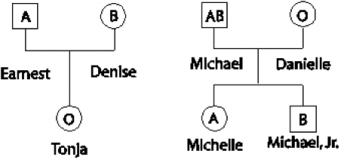 This game helps students to enjoy reviewing vocabulary related to cells, organelles, and the plasma membrane. Each card in the deck has a target vocabulary word and two related taboo words that the student may not use as he/she gives clues so the other students in his/her small group can guess the target word. Many students have trouble learning the substantial new vocabulary required for biology, and this game lets students have fun while reinforcing their understanding of key terms.
This game helps students to enjoy reviewing vocabulary related to cells, organelles, and the plasma membrane. Each card in the deck has a target vocabulary word and two related taboo words that the student may not use as he/she gives clues so the other students in his/her small group can guess the target word. Many students have trouble learning the substantial new vocabulary required for biology, and this game lets students have fun while reinforcing their understanding of key terms.
The first file below provides the master copy for creating the card decks for this game, and the second file below provides the teacher notes, including instructions for playing the game.

 © Serendip® 1994 - All rights reserved. Privacy Policy
© Serendip® 1994 - All rights reserved. Privacy Policy
 This game helps students to enjoy reviewing vocabulary related to cells, organelles, and the plasma membrane. Each card in the deck has a target vocabulary word and two related taboo words that the student may not use as he/she gives clues so the other students in his/her small group can guess the target word. Many students have trouble learning the substantial new vocabulary required for biology, and this game lets students have fun while reinforcing their understanding of key terms.
This game helps students to enjoy reviewing vocabulary related to cells, organelles, and the plasma membrane. Each card in the deck has a target vocabulary word and two related taboo words that the student may not use as he/she gives clues so the other students in his/her small group can guess the target word. Many students have trouble learning the substantial new vocabulary required for biology, and this game lets students have fun while reinforcing their understanding of key terms.  This analysis and discussion activity introduces students to the basic principles of how organisms use energy.
This analysis and discussion activity introduces students to the basic principles of how organisms use energy.

